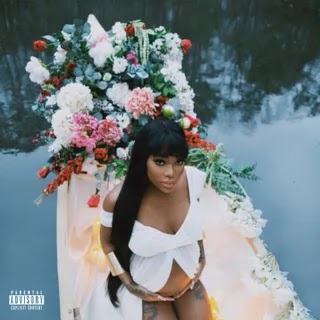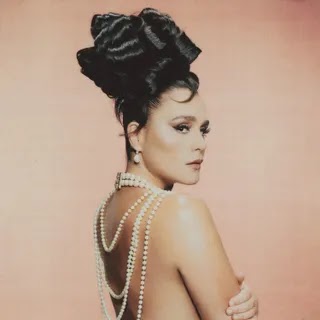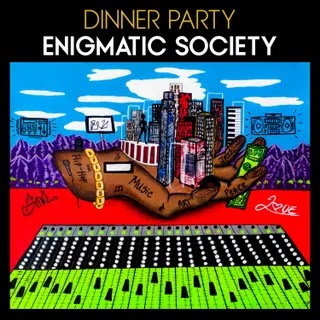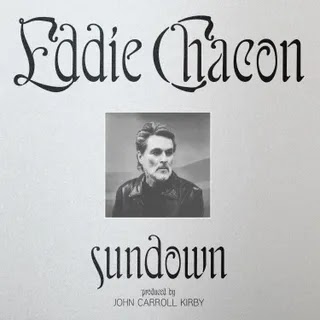Each Sunday, Pitchfork takes an in-depth look at a significant album from the past, and any record not in our archives is eligible. Today we revisit the groundbreaking 1995 soundtrack that changed Bollywood forever.
In 1993, when the Indian director Mani Ratnam recruited the then-27-year-old composer A. R. Rahman to make the music for his film Bombay, he said it would be one of the rare Bollywood films to tell a story about a Hindu-Muslim romance, a union that was, and often still is, widely considered taboo. Nearly 50 years earlier, the South Asian subcontinent achieved independence from British rule and underwent a traumatic process of Partition, dividing into Muslim-majority Pakistan and Hindu-majority India. Though their ideologies were born before Partition, the Hindu elite in India formed a new national identity based in Hindu supremacy in the decades that followed. It was within this context that Ratnam, a Hindu filmmaker, decided to make a film that suggested love could triumph over all.
At the time, Hindu-Muslim tensions in India were escalating higher still when gruesome riots in Mumbai left over 1,100 people dead, the majority of them Muslim. The riots started in December 1992 after Hindu fundamentalists burned down the Babri Masjid in Ayodhya, and were further spurred by leaders of the Hindu supremacist Shiv Sena party in Mumbai. It was widely considered one of the worst instances of religiously motivated violence in Mumbai in the last 50 years.
Into this world, Bombay brought the story of a Hindu man, Shekar, who falls in love with a Muslim woman, Shaila Banu. They move to Mumbai, where they raise twins and enjoy a blissful life together until riots wreak havoc on the city and separate their family. The film ends with a cry for peace from Shekar, a reunion of the couple and their children, and the formation of a “human chain” of Hindus and Muslims who dramatically throw down their weapons, clasp hands, and choose to live in harmony.
Ratnam gave Rahman a two-week deadline to make all the music for the complicated film. As the deadline passed, Rahman didn’t have a single song ready. Instead, he surprised Ratnam with an instrumental piece he called “Bombay Theme.” In A. R. Rahman: The Spirit of Music, he told interviewer Nasreen Munni Kabir that the song, which opens with a sinuous bamboo flute singing out over a churning underbelly of synths and strings, “made a musical statement about non-violence…`and encouraged us to see the inner self rather than the outer.” When Ratnam first heard the song, he was silent for a few minutes and then jokingly asked, “Where are the tunes?”
The tunes would come eventually, including a bombastic synth-pop number, a lovesick ballad, and a winding qawwali-inspired song. The scope of the album solidified Rahman as the preeminent South Asian film composer for the next two decades, and arguably the one with the biggest influence on Western music. It would also become the best-selling soundtrack in Indian film history.
“Bombay Theme” in particular has had a surprisingly successful trajectory for an instrumental piece. It has been used in four other international films and added to countless “world music” soundtracks. In his essay “Violence, Reconciliation, and Memory: A.R. Rahman’s ‘Bombay Theme’,” Jayson Beaster-Jones writes that the song’s inclusion in the soundtrack was unusual, and perhaps a way for Rahman to flex the range of his skill. At the time, background instrumental pieces, known as film music in Indian cinema, were mostly outsourced by musical directors, but even early in his career, Rahman was creating both high-intensity pop songs and their sophisticated instrumental counterparts with ease. The inclusion of the instrumental piece in the soundtrack also signaled the importance Rahman placed on using themes and repurposing snippets of songs throughout a film to gesture at the emotional states of the characters. As Beaster-Jones points out, there are at least 50 instances of re-emerging leitmotifs in Bombay that further convey the cycle of violence and reconciliation central to its plot.
A. R. Rahman was born Dileep Kumar in Chennai, and was raised in a musical family that listened to everything from Vangelis to John Williams to Zulu chants. His father, R. K. Sekhar, was a well-known musician, and the first composer in South India to own a Japanese synthesizer at a time when they were prohibitively expensive. Sekhar died when Rahman was just 9 years old, ultimately pushing him to take musical jobs to help support his family. He was a roadie for a period and, later, a keyboard player for prominent artists like Ilayaraja, one of the first composers to incorporate Western music into Indian films. When the composer and his family converted to Islam from Hinduism when he was a teenager, he changed his name to Allahrakha Rahman, a name his mother liked.
In his teens and early 20s, Rahman also formed multiple short-lived rock bands, as well a putting out a few solo albums in the late ’80s, but didn’t feel that there wasn’t a market for the music he was making. He knew it was lucrative to work in movies, but for the most part, as he said in A. R. Rahman: The Spirit of Music, he didn’t like the kinds of films he saw in the ’80s, so he made tracks for fun and kept them for himself. When Rahman and Ratnam met, after a 1991 awards ceremony where Raham was honored for a coffee jingle, it was ultimately this trove of private songs that won the director over.
In 1992, the two began working together on a film called Roja, a Tamil-language movie about a woman searching for her husband, who was being held captive by secessionists in Kashmir. It was the first in Ratnam’s contentious “terrorism trilogy”: films that used ordinary citizens’ stories to examine the sociopolitical turmoil of contemporary Indian culture, but that were rightfully critiqued for pushing nationalist Hindu-dominant perspectives. Roja’s unconventional soundtrack—which masterfully melded Indian folk sounds with reggae, introduced new playback singers, and broke away from traditional verse-stanza song construction—was a huge success. It catapulted Ratnam and Rahman from stars of their regional Tamil-language scene to mainstream success within the broader Hindi-dominated Bollywood industry.
Even before the success of the Roja soundtrack, Ratnam was invested in Rahman’s career as a collaborator and mentor. It was Ratnam who encouraged Rahman to mash together beautiful and jarring sounds, and you can hear it at the beginning of “Bombay Theme,” which symbolizes Shekar and Shaila’s romantic union in contrast to the monstrosity of the violence beyond it. When a technician balked at Rahman’s Roja’s soundtrack—asking him where the traditional tabla and violin sounds were—Ratnam told him to leave the music as it was. Rahman once told Chennai Times that he remembered Ratnam meeting his mother and telling her, “I’m doing a movie with your son now. If this doesn’t work out, I’ll do another movie with him.”
That kind of unequivocal validation was necessary for someone breaking as many conventions as Rahman did in the early ’90s. Beaster-Jones argues it was a moment perfectly primed for a new voice: R. D. Burman, the composer credited with introducing rock and disco to Indian folk music, had just died, and a number of influential composer duos, including Laxmikant-Pyarelal and Kalyanji-Anandji, had recently retired. Ratnam had also recently split with Balachander and Ilaiyaraaja, the composers with whom he had made a number of Tamil film songs in the ’70s and ’80s.
Rahman found that voice by incorporating new Western electronic sounds without sacrificing Indian folk influence, specifically the Carnatic sounds of South Indian music, Hindustani classical, and qawwali, an ecstatic form of Sufi music that aims to bring the listener closer to God. While most film music of the time relied on large string sections and orchestras, Rahman worked from his home studio with limited resources. Instead of expensive ensembles or extended studio sessions, he used double-tracking and samples to weave together snippets of sound. His music had a newfound dynamism: the trill of a flute or a cascade of synth surge to the front of the mix for a few seconds at a time, like a jack-in-the-box bursting open and then retreating back. This style of textured, emotional music helped to shape the political contours of his early collaborations with Ratnam.
“Kannalanae,” a song influenced by qawwali, is sung by Shaila at the beginning of the film as she pines for Shekar’s love. There are moments when K. S. Chithra’s voice comes into sharp focus, dripping with yearning over the very slightest of percussion flourishes, but right as the song might become cloying, Rahman puts the harmonium or group vocals centerstage. Motifs from the song symbolize Shaila’s journey through the first half of the film: They play whenever she feels tension between her family, her Muslim identity, and her love for Shekar. “Kuchi Kuchi Rakkamma” uses the same Rolodex of samples to evoke an entirely different emotional state. The song plays once Shekar and Shaila are happily married and Shekar playfully asks Shaila to have a daughter. Jabs of violin, tambourine, and bamboo flute burst into the mix and retreat just as quickly, creating a tapestry of sound that relays their marital bliss.
Because sexuality is heavily censored in Bollywood films—onscreen kisses are rare—the lavish musical sequences are often a way for the characters to dramatically express desires and emotions they wouldn’t be able to within the rest of the regular script. In Bombay, Ratnam takes this a step further, using the music to explore a Hindu-Muslim romance, which is otherwise taboo in Bollywood. He uses art-house cinema techniques on typical Bollywood tropes, supplementing ostentatious choreographed dance numbers with meandering, inky cinematography, and leitmotifs that tie the music explicitly to the plot. Ratnam wanted to show Shekar and Shaila’s love as an antidote for the brutal violence that was to come. Instead of simply using songs to relay desire and lust, he used Rahman’s triumphant music to relay the intensity of their bond and the family unit they create together, one forbidden within the political context of the film. Every song captures a pivotal moment in their relationship, whether it’s the first time they openly declare their love, their wedding night, or the birth of their children. Notably, “Idhu annai bhoomi,” the one song in the film that’s explicitly about the riots and not about the couple’s romance, is not included in the soundtrack.
The clearest examples of musical sequences driving the romance narrative are “Uyirae” and “Poovukkenna Poottu.” The former—a heart-wrenching ballad that details the excruciating pain of separation from a lover—was originally meant to be sung years into the couples’ relationship as they reminisce on a temporary separation in the past. Instead, it was moved to the beginning of the film to soundtrack the moment when Shekar and Shaila decide to be together despite the pain it will cause their families. It was a risky move, one that could easily have felt like unearned emotion. But together, Ratnam and Rahman pull it off. The scene contains some of the most iconic cinematography in contemporary Bollywood cinema: Filmed on the Kerala seaside during the monsoon, waves crash, wind rustles, and emotion seems suspended in every particle of the humid air. Paired with percussive dabs of synth and vocal performances that move with the quiet force of a river slowly carving a canyon, the scene leaves you overwhelmingly convinced of the grandiosity of the couple’s love.
“Poovukkenna Poottu” also depicts a montage pivotal to Shekar and Shaila Banu’s evolution as a couple. Throughout the course of the song, Shaila gets pregnant, gives birth, and raises her twin sons into early childhood. The song and imagery are so euphoric—full of wonderfully noodly synth lines, lyrics shouted as much as they are sung, and scenes of pure domestic bliss—that the sequence feels almost ominous. As Lalitha Gopalan outlines in her book Bombay, with disaster on the horizon, “Poovukkenna Poottu” represents one of the last moments of pure joy the family will experience, an allegory of the real things that are lost amid political violence.
In the 26 years since Bombay was released, the treatment of Muslims in India has only worsened as the Hindu fundamentalist Bharatiya Janata Party has risen to power. India’s only Muslim-majority state, Jammu and Kashmir, has been stripped of autonomy and access to basic amenities like internet and phone services. The 2019 Citizenship Amendment Act and the National Register of Citizens together deny citizenship to many Muslims in India. And a new law passed in the state of Uttar Pradesh makes religious conversion after marriage a non-bailable offense, motivated by a Hindu supremacist notion that Muslim men forcibly convert Hindu women via marriage.
In this context, Ratnam’s desire to portray a loving Hindu-Muslim romance, subject matter that most directors found—and continue to find—too controversial to approach, feels earnest. In a generous reading of his portrayal of the Mumbai riots and Shaila and Shekar’s relationship, the film chooses to ignore the structural power Hindus have over Muslims in India. In a more critical reading, it is overtly Islamophobic. The film has been heavily criticized for promoting a veneer of secularism that stigmatizes Muslim identity rather than honoring it. When it was first screened, Muslim critics and leaders urged a boycott of the film, claiming it portrayed the Muslim characters as overly aggressive and that it was disrespectful to show Shaila without her veil. “It was perhaps the worst period in the city’s history and Mani Ratnam is making a song-and-dance affair out of our suffering,” film critic Iqbal Masood told Agence France Presse at the time.
And it’s all right there: As Angie Mallhi outlines in her essay “The Illusions of Secularism,” Muslims are much more likely to be shown praying throughout the film, an implication that they are overly religious by comparison to “secular” Hindus. Shaila Banu forsakes her burqa, a part of her religious identity, when she decides to be with Shekar. He makes no religious sacrifice for the relationship. At the end of the film, he proudly declares, “I’m not Hindu or Muslim, I am every man,” again reinforcing the idea that upper-caste Hinduism is the default Indian identity. What’s more, the film only shows Hindu supremacists demolishing the Babri Masjid through newspaper headlines, but explicitly depicts Muslims instigating the riots that followed, as if they were primary or at least equal aggressors in the conflict. In reality, Muslims made up less than 15 percent of Mumbai’s population at the time of the riots, but were the majority of the people killed.
Especially troubling was the extent to which the government was able to edit the contents of the final film. The decision to cut footage of Hindu supremacists demolishing the masjid was part of a censorship process by many outside groups including the Board of Censors, the Home Department in the State of Maharashtra, and the police. Its release was delayed by months in Mumbai because the Hindu supremacist group Shiv Sena was running for reelection and feared that the film might have enough socio-political power to skew the election results. Bombay’s film distribution company gave Bal Thackeray, the founder and leader of the Shiv Sena Party, permission to censor the film as well. Thackeray called the final project “a damned good film.”
Theorists Ravi S. Vasudevan and Jayson Beaster-Jones have written that the film operates as a “substitute for memory.” It uses methods like grainy footage and newspaper clippings soundtracked by “heavy drums, low synthesizer drone, and sounds of men yelling” to convey a serious, political tone and present itself as a historical film rather than a purely fictional one. A piece of cultural entertainment released so close to the events it depicts feels especially capable of shaping public perception. That it depicts such a skewed version of history makes it especially irresponsible.
All of this makes the film’s soundtrack an incredibly complicated piece to consider, especially when Ratnam and Rahman worked in such synchronicity to create it. In an interview before the film's release, Ratnam sidestepped the political discourse around the album, saying it was a “genuine attempt by a filmmaker to bring about communal harmony.” As a purely musical artifact, if such a thing exists, the Bombay soundtrack marks the moment that solidified Rahman’s auteur status. He has won multiple Grammys and Oscars for Slumdog Millionaire, worked with everyone from Andrew Lloyd Webber to Dido, sold 150 million records, and revolutionized the sound of South Asian film music by melding electronic technology and Indian folk sounds, Tamil and Hindi, Carnatic and Hindustani classical traditions. On the Bombay soundtrack, he was making some of the rawest, most ecstatic, and innovative music of his career.
And yet, one of its strengths—Rahman’s ability to craft majestic arrangements that convey the gravity of falling in love and the anguish when that feeling is threatened—is also its shortcoming. This is music that leans into dramatics and celebrates romantic love as paramount, that imagines a fantasy world where the bond between two individuals and the family unit they create is powerful enough to end riots and overcome years of oppression. While poetic in a vacuum, such a claim absolves those in power of their culpability. It positions politics as something solvable by emotion instead of systemic work. But no amount of romantic camera shots, swelling synth motifs, or pleas for peace could amount to more than a symbolic half-measure. The equity found in love can never be a stand in the equity of real political justice.
















0 comments:
Post a Comment